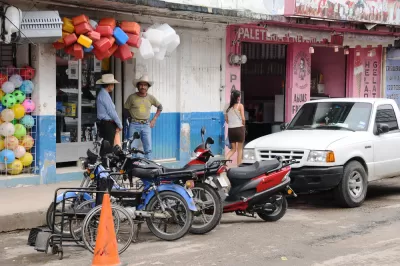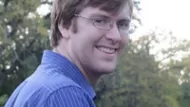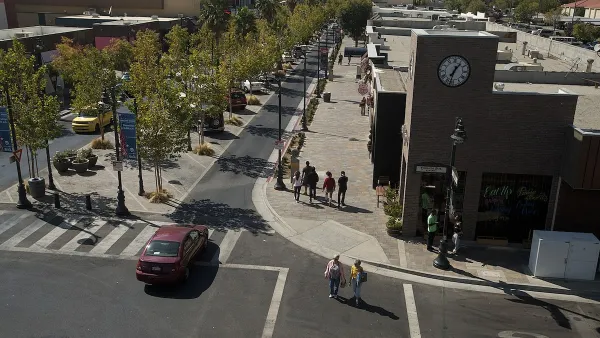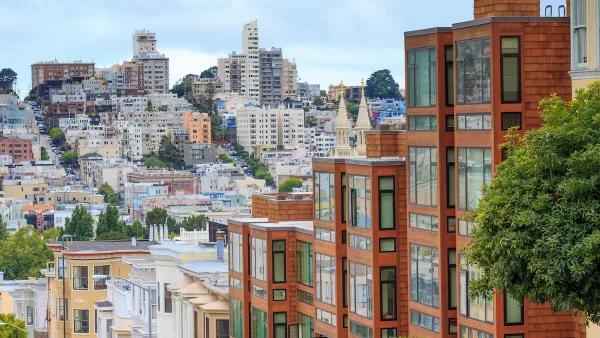Mixed use neighborhoods and walkable neighborhoods in Mexican cities and towns.

On Calle America Latina on the block between Calle Chile and Avenida Tercer Mundo in San Francisco, Mexico there's always someone walking down the street. In the early morning, surfers go out to catch the waves that break at dawn; then there is the march of children and mothers to school alongside workers off to open shops or travel to construction sites just out of town. After the morning rush, there are the many trips by homemakers to corner shops for fruit, coffee, and other groceries. Around midday children come home from half-day classes, and tourists amble to taquerias. The afternoon sees the return of workers and more tourists making their ways to beaches or back to hotels. Diners usually eat later here, and at nine o'clock there are as many people on the street as any time of day. Not just shop owners, vendors, and tourists, but children playing tag, teenagers gossiping in front of convenience stores, and adults chatting about the events of the day. As the night grows later and people return home, many are not enclosed inside their houses. Even TV watchers often have their doors open to allow a breeze to circulate or to create a chance to converse with a neighbor on her way home.
I've lived in and visited dozens of cities and towns in Mexico, and Calle America Latina is not unusual. This partly residential street in a little tourist town by the sea perfectly illustrates the amount of life spent outside of the house because of how typical it is.
The side street I lived on in Guadalajara's Colonia del Fresno was also home to a number of small businesses. My next door neighbor sold pozole (hominy soup) out her front door. When the weather was nice, she put out two plastic folding tables on the sidewalk, and her home became an outdoor café.
There were corner stores at the intersection at either end of our block. Across from one of those stores was an "internet café," which consisted of four computers connected to the internet and one drip coffee maker. The other corner was home to a small popsicle warehouse, which was only rarely open for business.
All this street activity made the neighborhood feel safe, and I would imagine, in a practical way, the neighborhood was a great deal safer than many. This was in 2007, Mexico was regularly in the news for kidnappings and drug trafficking. But that world didn’t seem to touch our working class neighborhood. Kidnappers would likely have found our neighborhood undesirable as it lacked rich people or tourists. When I saw drugs in the area it was not young men on sidewalks staking their claim to a corner, it would be high schoolers smoking weed in parks, but that wouldn't shock anyone that spent any time in the parks in Chicago.
These businesses didn't appear because of some subsidy or local business encouragement program, they were simply permitted to exist. No planner had made a perfect spot for them. They just sprang up, and there was no licensing body to tell them they had to shut down. It's a phenomenon that Jose Castillo calls informal, a term that’s "deliberately ambiguous"—meaning casual, unsanctioned, and lacking a precise form.
This is not to say that an unplanned neighborhood didn't create their own problems. One was the presence or height of seemingly random speed bumps. Whatever the process was for locating speed bumps in the city of Guadalajara, it left a lot to be desired. Speed bumps would often immediately follow green lights. Once when driving in a car with a low clearance, we literally got stuck on a ridiculously tall speed bump. Another was street addresses which followed no discernible pattern. Many houses, including my own, had no number. The only description I could offer for where my house was the street name and the two intersections it sat between. This meant certain things that should have been easy were pretty hard. We never received mail. When I had an international visitor coming, I couldn't tell him exactly which house to go to. He ended up walking to one of the corner stores and asking the owner where the tall American lived.
Still the vitality of these neighborhoods makes me think dense, vibrant, mixed-use neighborhoods might be easier to create than we imagine. If cities can get out of their own ways, the people who live in them might make those cities safer and more active all their own.

Maui's Vacation Rental Debate Turns Ugly
Verbal attacks, misinformation campaigns and fistfights plague a high-stakes debate to convert thousands of vacation rentals into long-term housing.

Planetizen Federal Action Tracker
A weekly monitor of how Trump’s orders and actions are impacting planners and planning in America.

In Urban Planning, AI Prompting Could be the New Design Thinking
Creativity has long been key to great urban design. What if we see AI as our new creative partner?

King County Supportive Housing Program Offers Hope for Unhoused Residents
The county is taking a ‘Housing First’ approach that prioritizes getting people into housing, then offering wraparound supportive services.

Researchers Use AI to Get Clearer Picture of US Housing
Analysts are using artificial intelligence to supercharge their research by allowing them to comb through data faster. Though these AI tools can be error prone, they save time and housing researchers are optimistic about the future.

Making Shared Micromobility More Inclusive
Cities and shared mobility system operators can do more to include people with disabilities in planning and operations, per a new report.
Urban Design for Planners 1: Software Tools
This six-course series explores essential urban design concepts using open source software and equips planners with the tools they need to participate fully in the urban design process.
Planning for Universal Design
Learn the tools for implementing Universal Design in planning regulations.
planning NEXT
Appalachian Highlands Housing Partners
Mpact (founded as Rail~Volution)
City of Camden Redevelopment Agency
City of Astoria
City of Portland
City of Laramie






























